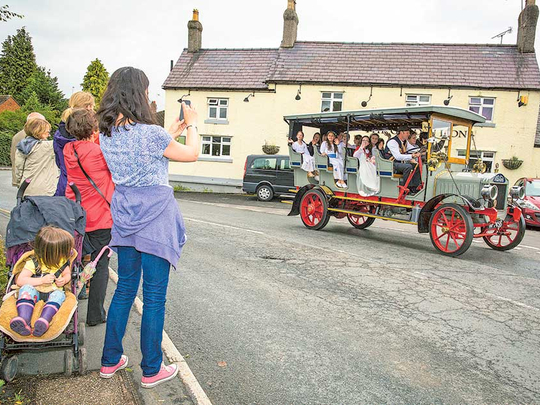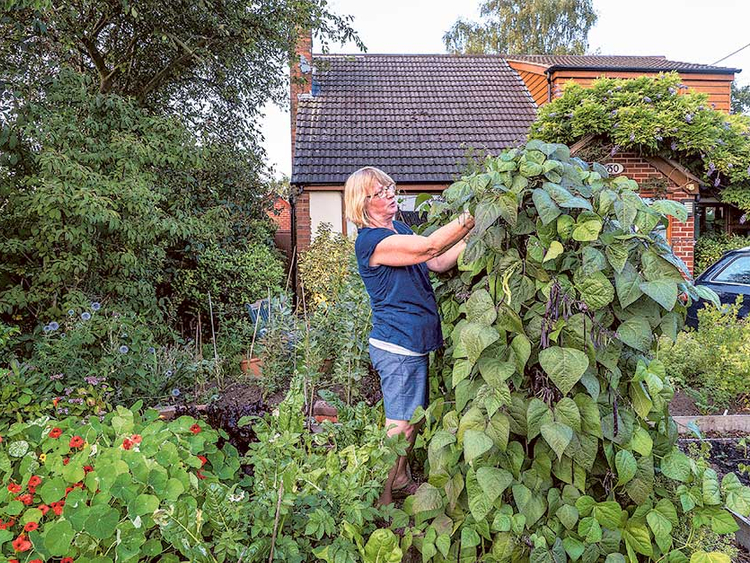
Ashton Hayes, England: This small village of about 1,000 people looks like any other nestled in the countryside.
But Ashton Hayes is different in an important way when it comes to one of the world’s most pressing issues: climate change. Hundreds of residents have banded together to cut greenhouse gas emissions — they use clotheslines instead of dryers, take fewer flights, install solar panels and glaze windows to better insulate their homes.
The effort, reaching its 10th anniversary this year, has led to a 24 per cent cut in emissions, according to surveys by a professor of environmental sustainability who lives here.
But what makes Ashton Hayes unusual is its approach — the residents have done it themselves, without prodding from government. About 200 towns, cities and counties around the world — including Notteroy, Norway; Upper Saddle River, New Jersey; and Changhua County, Taiwan — have reached out to learn how the villagers here did it.
As climate science has become more accepted, and the effects of a warming planet are becoming increasingly clear, Ashton Hayes is a case study for the next phase of battling climate change: getting people to change their habits.
“We just think everyone should try to clean up their patch,” said Rosemary Dossett, a resident of the village. “And rather than going out and shouting about it, we just do it.”
One of their secrets, it seems, is that the people of Ashton Hayes feel in charge, rather than following government policies. When the member of Parliament who represents the village showed up at their first public meeting in January 2006, he was told he could not make any speeches.
“We said, ‘This is not about you tonight, this is about us, and you can listen to what we’ve got to say for a change,’” said Kate Harrison, a resident and early member of the group.
No politician has been allowed to address the group since. The village has kept the effort separate from party politics, which residents thought would only divide them along ideological lines.
The project was started by Garry Charnock, a former journalist who trained as a hydrologist and has lived in the village for about 30 years. He got the idea a little more than a decade ago after attending a lecture about climate change at the Hay Festival, an annual literary gathering in Wales. He decided to try to get Ashton Hayes to become, as he put it, “Britain’s first carbon-neutral village.”
“But even if we don’t,” he recalls thinking at the time, “let’s try to have a little fun.”
Sometimes, efforts to reduce greenhouse gases involve guilt-tripping or doomsday scenarios that make people feel as if the problem is too overwhelming to tackle.
In Ashton Hayes — about 45 kilometres southeast of Liverpool, with a 19th-century Anglican church and a community-owned shop that doubles as a post office — the villagers have lightened the mood.
They hold public wine-and-cheese meetings in the biggest houses in town, “so everyone can have a look around,” and see how the wealthier people live, said Charnock, executive director of RSK, an environmental consulting company. “We don’t ever finger-wag in Ashton Hayes.”
About 650 people — more than half of the village’s residents — showed up to the first meeting, Charnock said. Some in the village were less keen, but little by little, they began to participate.
Some have gone further. When they were looking to build their energy-efficient home and heard about Ashton Hayes’ carbon-neutral project, Dossett and her husband, Ian, thought it might be the perfect village for them.
They moved from nearby South Warrington and found two old farm cottages, which they converted into a two-storey brick house, and installed huge triple-glazed windows, photovoltaic cells on the roof, a geothermal heat pump that heats the home and its water, and an underground cistern to hold rainwater for toilets and the garden.
“I wouldn’t want anyone to think we live in a mud hut,” Dossett said, sitting on a couch in her warm, well-lit living room.
The Dossetts also have a vegetable garden, grow grapes for wine, brew beer and keep two cows, which mow the lawn and may also eventually become food in a few years. They pay about £500 pounds (Dh2,200) a year for electricity and heating.
Though deep cuts across the globe are still required to make broader progress, actions to reduce emissions, even by small towns, are a step in the right direction, say experts who study community action on climate change.
“The community-building element of all this has been as important as the environmental impact so far,” said Sarah Darby, a researcher at Oxford University’s Environmental Change Institute.
She added that Ashton Hayes was in a good position to take on these kinds of projects — it is a small village of well-off and well-educated people, so simply taking fewer flights each year can have a big effect.
Residents were able to cut emissions by about 20 per cent in the first year alone, according to surveys used to calculate carbon footprints that were developed by Roy Alexander, a local professor, and his students.
Some have had even more significant reductions: Households that participated in surveys in both the first and 10th years shrank their energy use by about 40 per cent.
Charnock said he thought the village could get the cuts in its 2006 carbon footprint to 80 per cent in the next few years with the help of grant money to buy and install solar panels on the local school and other buildings.
The next thing they have to do, he said, is to get the county government to be as committed to cutting emissions as Ashton Hayes is.
“There’s so much apathy,” Charnock said. “We need to squeeze that layer of apathy jelly and get it out.”














